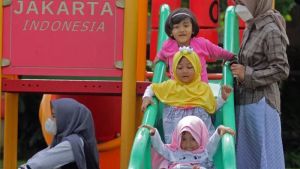YOGYAKARTA Skills of problem solving or overcoming problems, need to be trained in children from an early age. At least at their age they know the world outside the home or when parents start teaching their daily routines. Like being independent to eat, take a bath, and prepare their own needs at home.
Problem solving skills, are key to helping children manage their lives. Where research published in Behavior Research and Therapy shows that children who lack the skills of solving problems may be at higher risk of depression and suicide. Researchers also found, teaching problem solving skills in children, can improve mental health.
Children face various problems every day, but they have little formula to solve them. Starting with academics to sports or in friendships with their peers. So, it is important for children to learn not to rely on energy in solving problems, but also to take appropriate considerations according to their age. For this reason, here's how to teach children the problem of solving skills from an early age.
To prevent impulsive choices or actions, teach how to identify problems. Like by stating 'I don't have any friends to play with during rest hours' or 'I'm not sure what tutoring this semester'. By finding out what the problem is, the kids will realize and make a big difference instead of independence.
Brainstorming is the most likely way to solve the problem. This is the second way to teach children the problem of solving. Ask them that all solutions don't have to be a good idea. However, help them develop solutions if they have difficulty finding ideas. In fact, artificial ideas also allow solutions. The key is to help them that with a little creativity, they can find many potential solutions.
Help your child identify potential positive and negative consequences for every potential solution they identify. At the beginning of training, they can use a table so that they can more easily identify the pros and cons of each solution they have. If they are trained repeatedly, they will get used to identifying without the need to make a table and are spontaneous.
Before deciding what solution to choose from solving the problem, the child has recognized the consequences of each solution. Then after evaluating, encourage them to choose a solution.
Throughout life is how a person learns from his experience. Likewise, children, they need to know that learning is not only about academics. But also look at the results of solutions to the problems they have. If they don't succeed, they can always try other solutions from the list they developed.
اقرأ أيضا:
Launching VerywellFamily, Tuesday, July 4, When problems arise, don't rush to solve your child's problems for them. Offer guidance when they need help, but encourage them to solve their own problems. If they can't find a solution, step in and help them think about some solutions. However, don't automatically tell them what to do.
The English, Chinese, Japanese, Arabic, and French versions are automatically generated by the AI. So there may still be inaccuracies in translating, please always see Indonesian as our main language. (system supported by DigitalSiber.id)


















